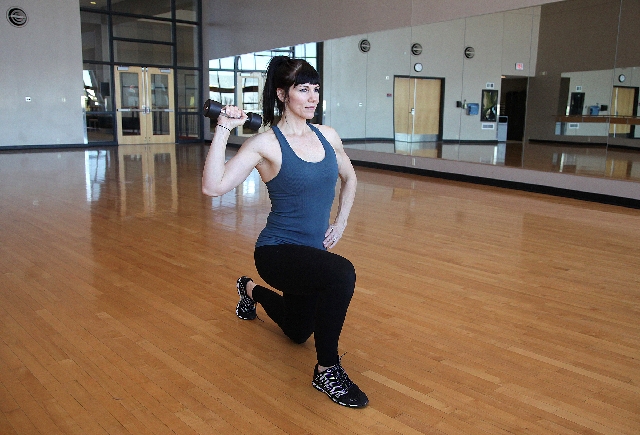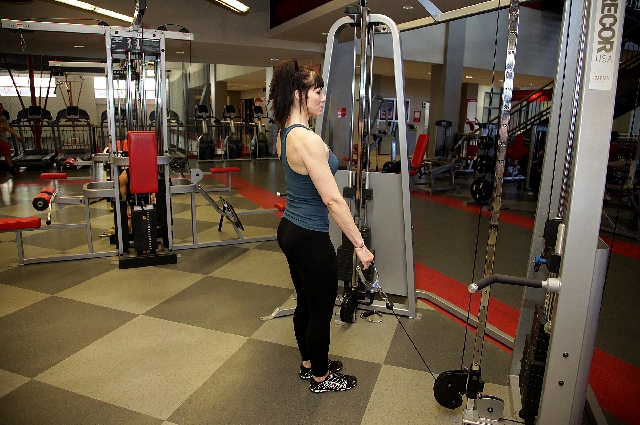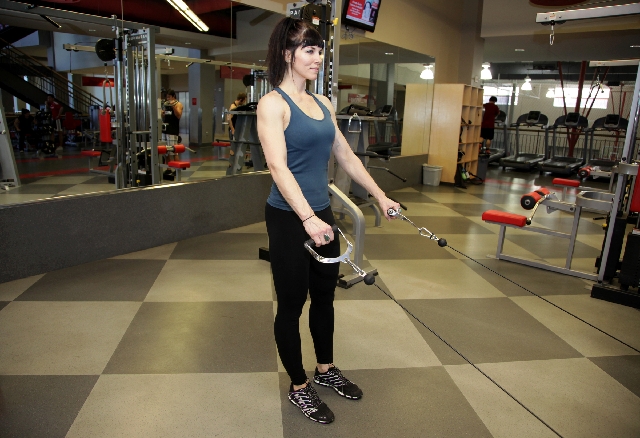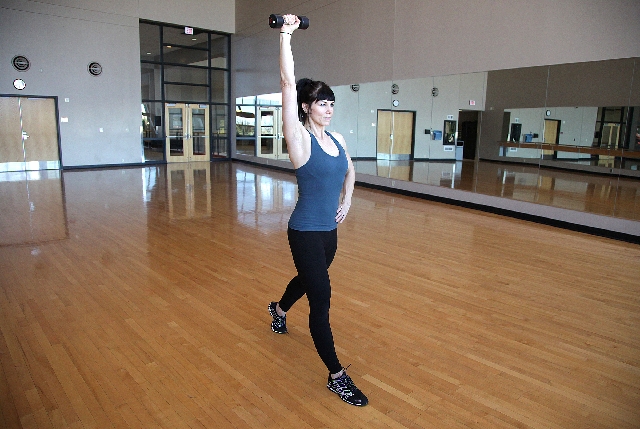Improve conditioning with total-body workouts




Put aside that isolation routine for one day and try working all your muscles at once.
Don’t be worried if you start to breathe heavy, perspire and get tired. You’re not having a heart attack, you’re just becoming fitter.
Total-body exercises are a good way to push your body to new levels as well as condition yourself to do difficult things.
The first exercise is a compound exercise. It combines an upper and a lower body exercise and ties them together with core stability. As if a lunge weren’t hard enough. Now I’m adding a single arm shoulder press. The lunge-to-press will condition the body no matter what kind of athlete you are. Newcomers can progress the lunge by adding the shoulder press to increase stability. The more experienced can do this exercise with heavier weight or during a circuit to intensify their conditioning.
When combining exercises, you should be aware of some form issues. Lunges can be tricky enough when doing them by themselves. Adding another element divides the focus and the lunges or the press can suffer. You should master both exercises before combining the two.
The cable-drag is one of my favorite exercises. It uses large muscles to move as well as smaller stabilizers to support a good posture. If you have ever lugged a heavy bag through the airport then you know how to do a weight drag. Hopefully, your back was straight and your core was tight.
If you’re concerned about difficult movements being too challenging, don’t worry. This one is for you. Cable-drags are easy on the knees because of the limited range of motion in the joint. They are also easy to learn. Keeping the core tight and back straight while standing are fairly simple. Since cable machines have an adjustable weight stack, you can add or subtract as much weight as you’d like with a selector pin.
As a trainer, I use cable-drags to teach the body how to move with proper posture. It also teaches you how to keep the core contracted while the body works with load. Areas I watch are foremost the spine being straight and the head neutral. The feet are important, too. The feet tend to point outward as the weight gets heavier. Keeping the feet and the knees straight is necessary to create correct motor patterns.
Grip can be an issue for some. As you progress to heavier weight, your hands seem to get weaker. I recommend wrapping the thumb around the index finger when grasping the handle. See my earlier column on grip if you still have trouble holding on.
Cable machines vary in their appearance from gym to gym. Sometimes you have to hunt them down. The one shown in the column today may not look like the one in your gym. Some have adjustable arms while others have stationary columns with adjustable anchor points. Weight stacks can be shared by the two cables or each cable could have its own weight stack.
Chris Huth is a Las Vegas trainer. He can be reached at 702trainer@gmail.com. Consult your physician before beginning any exercise program.












